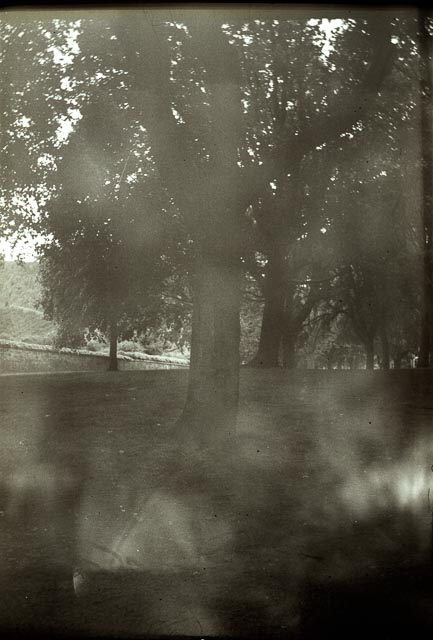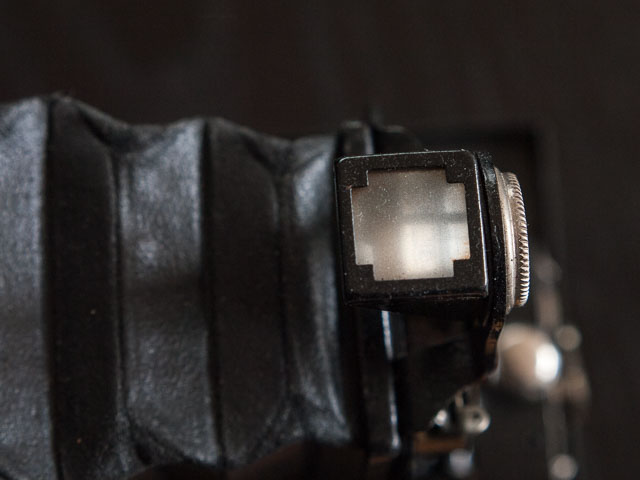Kodak No. 2 Folding Autographic Brownie


In the last decade of the 19th century and the first couple of decades of the 20th century Kodak made a huge number of different role film formats with a variety of different negative sizes. 120 (or No.2 film as it was originally called, hence the name of this camera) is the only one to survive to the present day. It is amazing to think that 120 film has been continuously made for well over 100 years! Today 120 film is considered "medium format", but 120 film was in fact the second smallest of these early roll film formats, with only 127 film (originally designed for Kodak's ‘vest pocket’ folding cameras) being smaller.
What this means in practice is that most pre-1930s Kodak folding cameras are rather difficult to use today because you can no longer get the film, but if you make sure you get one designed for No.2 or 120 film you can indeed still give your camera some exercise even today.
This particular example is in remarkably good condition, and seems to be in full working order. Indeed this camera even came complete with the box! The ‘Brownie’ range of folding cameras was towards the bottom of Kodak’s range and features a very simple lens (hidden behind the shutter and aperture mechanisms) and an even simpler focusing arrangement that could best be described as an early form of zone focusing. There were basically just three focusing settings: fixed (i.e. normal), 8 feet (i.e. close) and 100 feet (i.e. distant).


BTW, in case you're wandering, the ‘Autographic’ part of the camera name is a reference to a kind of early ‘data back’! There was a metal flap on the back of the camera along with a metal stylus. When you pulled up the flap you revealed the backing paper of the film on which you could write with the stylus. (The stylus is usually missing, so I was please to see this camera still has one!) You then let the sun shine on the backing paper for 5 seconds or so before pulling the flap back down. When your pictures were developed you words would appear in white on your photographs. If you’ve ever seen white writing on photographs from the 1910s or 1920s, this is how it was produced. You could only use this feature when you used ‘Autographic’ film in an ‘Autographic’ camera as the film has a special carbon layer under the backing paper. The action of the stylus on this layer removed the carbon which allowed the sun light to expose your writing onto the negative.
Photographs taken with the Kodak No. 2 Folding Autographic Brownie
Because this camera can be used with modern 120 film, it's possible to still use it today nearly 100 years after it was made… but there are some caveats! The main one is the red window on the back of the camera. This window is designed to let you see the frame counter numbers on the backing paper of a roll of 120 film. The black and white film made 100 years ago had low sensitivity to red lights, so a combination of the backing paper on the film, plus the red window, prevent the film from getting fogged. But modern film, not just colour film but black and white film too, is sensitive to all visible colours of light. For this reason you need to tape up the window with a couple of layers of black electrical tape. See below what happens if you don't do this!
Of course this means you can't see the frame counter numbers which means you don't know when you've wound the film on the right amount for the next frame. So winding on involves a lot of guess work! But it doesn't have to be entirely uneducated guesswork. You can cut a piece of plain paper to the right width and put a mark every 9.5cms. Then load the camera up with your fake film and and while the back is still detached from the camera wind on you "film" and count how many turns of the film advance knob will advance the film 9.5cms. When you have real film in your camera just wind on the film the number of turns you have determined.
This is still a bit hit-and-miss which is why I suggest counting the number of turns winds the film on a bit more than the 9cm negative size. You will have to use your memory to remember how many frames are remaining on a roll of film. Bear mind you'll only get 8 frames, or perhaps just 7 if you're dining on a bit more than usual.
Note also that the Autographic window may also cause fogging, so taping that up is also a good idea.
You can also try using the lens/bellows unit as a lens for your mirrorless camera. See the Using a 100 year old lens from a Kodak Folding Brownie article in the Outlandish lenses section of this website for more information on doing this.
Film: Kodak T-Max 400
Location: Croft-an-Righ, Edinburgh
This is from the first film I ran through my Kodak No.2 Autographic Brownie, and this frame (frame 4 as it happens) was the only one that really came out as I was hoping. All the others are severely fogged to one degree or another.
I am at a loss to say what I did differently for this one. There are a few hints of fogging on this one that give the image a nice vintage feel. The film is Kodak T-Max 400, but I decided to scan it with my scanner set to colour mode as and just leave it as a colour file as I like the sepia effect this gives.

Film: Kodak T-Max 400
Location: Holyrood Park, Edinburgh
Another mage from the same film. This one (which was frame 6) is much more fogged than frame 4, but after processing the scan in Lightroom I found that under the fog there was actually quite a nice image.

Film: Kodak T-Max 400
Location: Easter Road, Edinburgh
Most of the frames on this roll of film look like this one! You can just about see a faint hint of an image under all the fogging. How much of this fogging is caused by the red window and how much by the Autographic window is difficult to tell!

Film: Lomography Lady Grey 400
Location: National Monument, Calton Hill, Edinburgh
This is from a much more recent roll of film shot on Lomography Lady Grey 400. I have to admit this roll of film had been sitting at the bottom of my fridge for a long time, but I was still very surprised to see the printing on the backing paper transfer to the negatives. I really have never seen anything like this before or since! In a strange way I actually quite like the effect, though I think this may put me off Lomography b&w film in the future.

Film: Lomography Lady Grey 400
Location: Old Calton Burial Ground, Edinburgh
Another shot from the same role of film, again with printing transferred from the backing paper.

Film: Lomography Lady Grey 400
Location: Unknown location, Edinburgh
Another shot from the same role of film. Several frames from this role of film were affected by fogging similar to the first film. Some of the frames were affected by this kind of fogging and some weren't, which is a bit perplexing. Maybe the brightness of the ambient lighting conditions when the camera is out of my bag has something to do with it. It really is impossible to detect any underlying image here at all! But to me the fogging looks like a ghost… (maybe I was in Old Calton Burial Ground when I took this photo and it really is a ghost!!)


